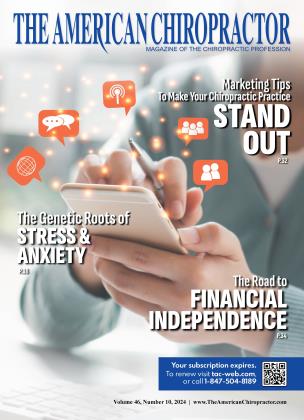Using Laser Therapy Successfully for Multiple Shoulder Conditions
By Ryan Novak, DC
The shoulder is the most moveable and complex joint in the human body, making it easy to injure but complicated to treat. When laser therapy is implemented correctly, a chiropractic physician can successfully treat shoulder tendinopathy, subacromial bursitis, subacromial impingement syndrome, adhesive capsulitis, and the shoulder pain and disability of a hemiplegic arm.
Doing a thorough shoulder examination to isolate the source of pain or exact pathological tissue is required to develop an appropriate treatment plan because there are many similar referral pain patterns to the shoulder region. Treating the shoulder condition with low-level laser therapy (LLLT) or high-intensity laser therapy (HILT) requires precise location and dose-specific procedures for optimal outcomes.
In a study published in 2015 in the Journal of Pain Research titled “Two-year follow-up of low-level laser therapy for elderly with painful adhesive capsulitis of the shoulder,” 50 participants had a series of three treatments a week for eight weeks administered at 5.7J per point, with eight specific points being treated. At the two-year follow-up, over 90% of the participants maintained significant improvement in the Constant-Murley shoulder score.
In a newer 2023 study that compared the efficacy of LLLT versus HILT for adhesive capsulitis, researchers concluded that HILT was more effective than LLLT.1 In this 2023 study, it must be pointed out that in the LLLT group, only 3J per point was administered with a series of three treatments for three weeks. From a clinical standpoint, increasing the treatment dose (Joules) per point or the duration of treatment will yield the most optimal outcome with pain associated with adhesive capsulitis, whether using LLLT or HILT.
Another article written in 2015 was a systematic review and meta-analysis of randomized controlled trials on the efficacy of LLLT for shoulder tendinopathy. The conclusion of this review was that LLLT independently can provide clinical pain relief and a more rapid course of improvement when performed at adequate laser doses.2
Laser therapy research for subacromial bursitis throughout the years has had mixed results, but from clinical experience, using a lower dose (Joules) at three points around the bursa while first treating the supraclavicular lymph nodes, axillary lymph nodes, and subclavian artery will yield the most successful treatment outcomes. Directly overtreating the bursa can exacerbate the condition.
On the other hand, subacromial impingement syndrome (SAIS) has shown very favorable outcomes with laser therapy. One study with 120 patients combined LLLT with exercise for three treatments for eight weeks and saw reduced pain and intensity along with improved shoulder function.3
Another study treated 20 patients with SAIS for one treatment using HILT at 25J per point and a pulse rate of 10-40Hz, with a total of six points treated. The conclusion of this study showed that HILT can immediately increase shoulder range of motion and reduce pain and disability with a single treatment.4 From clinical experience, a clinician can yield the same results with super pulsed LLLT at the same dose per point.
An older but interesting study was conducted in 2009 on patients with painful shoulder-hand syndrome after a stroke, comparing TENS and LLLT. Daily LLLT treatments were administered at 3J per painful point for three weeks, then three days a week for two weeks, and then two days a week for one week. The LLLT group patients had a more significant reduction in pain, swelling, and disability and an improvement in independence.5
Depending on the type of laser therapy device a clinician uses, the application points or locations may be slightly different, along with the total Joules and Joules/cm2. The bottom line is that all types of laser therapies are clinically effective to alleviate the pain and disability associated with multiple shoulder conditions when implemented correctly. It should be offered as a noninvasive, safe, drug-free treatment, especially for those at high risk of surgery or looking to forgo any surgical intervention, when possible.
It is never too late to start offering laser therapy to your patients if you do not do so already. Laser therapy is one of the most versatile and safe modalities a chiropractic physician and their staff can administer to rapidly optimize their patient outcomes.
About the Author
Dr. Novak is the chief scientific officer (CSO) for a sonophotobiomodulation therapy medical device facility and consulting firm that develops and distributes FDA-approved and registered devices, such as the PainBuster Super Pulsed Laser.
Learn more by calling 877-799-7477 or visiting PainBusterPro.com.
References
 View Full Issue
View Full Issue









